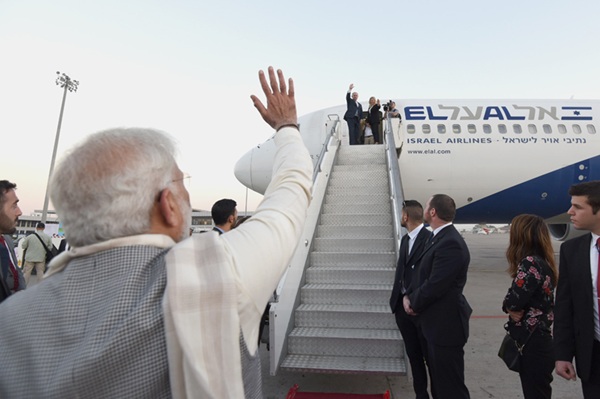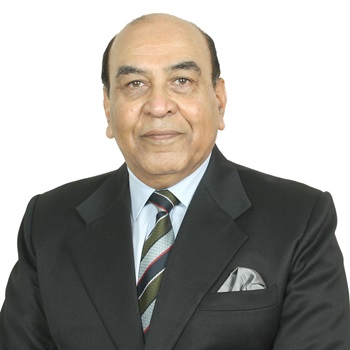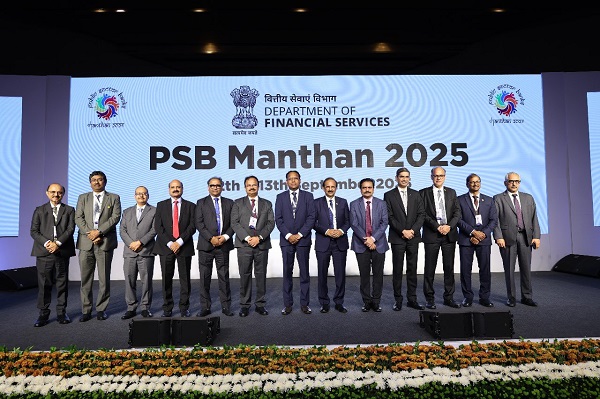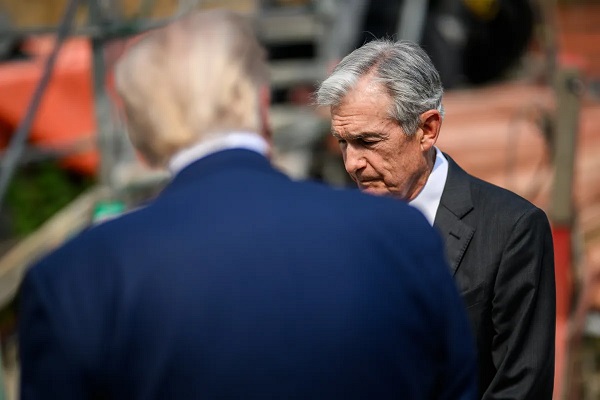.png)
A New Middle Eastern Canvas for All Indian Diplomacy
Diplomacy in the Middle East has always been a delicate dance. Today, it resembles a freshly-painted canvas: vibrant, but with strokes that can blur if handled clumsily.


By Lt Gen Syed Ata Hasnain (Retd)
Lt Gen Syed Ata Hasnain is a former Commander of India’s Kashmir Corps and Chancellor of the Central University of Kashmir.
September 17, 2025 at 1:26 PM IST
The Middle East has always been a theatre where India had to tread carefully—caught between energy needs, diaspora sensitivities, and global strategic currents. Yet, over the past decade, Prime Minister Narendra Modi has delivered one of his most significant foreign policy achievements: a transformation in India’s engagement with the region.
What once was a web of cordial but limited ties with the Arab world has now matured into a deeper, trust-based network of strategic partnerships. Simultaneously, India’s ties with Israel—long discreet, often understated—have blossomed into a full-fledged relationship touching defence, agriculture, cyber security, and intelligence sharing. Few countries have managed this dual embrace as successfully as India, and fewer still have mutually benefitted in such a marked way, deriving optimum dividends from it.
But this very success now faces turbulence. The Gaza campaign launched by Israeli Premier Benjamin Netanyahu has complicated the landscape. India, like much of the world, is caught in a moral dilemma on how to acknowledge the humanitarian catastrophe without undermining the hard-earned trust of a crucial partner. So far, India has gone with the tide—expressing restrained concern, urging de-escalation, but avoiding any sharp criticism of Israel. Strikingly, the Arab states themselves, despite their long history of solidarity with the Palestinian cause, have been restrained too, projecting a kind of compulsive dilemma. Their focus on normalisation, regional stability, and US ties has kept them from rocking the boat. That tacit Arab acquiescence has also prevented India from diplomatic scrutiny, but this shield cannot be taken for granted.
When India threw its weight behind initiatives such as the India–Middle East–Europe Corridor or the broader Indo-US-UAE-Israel understanding, it signaled an ambition to be more than a regional player. It sought to anchor a strategic bridge across continents. At the peak of the emerging and currently perceived to be stalled Indo-US strategic partnership, these projects seemed poised to reshape connectivity, energy, and trade.
Yet momentum has slowed. IMEC remains on paper, its contours blurred by regional instability and competing priorities. The once-promising Indo-UAE-US-Israel compact appears diluted, its coherence somewhat scattered. Into that vacuum, critical voices creep in—anti-India lobbies in the US and Middle East quick to paint us as inconsistent, opportunistic, or overly reliant on narrow alignments. The Pakistani hand in this seems more than evident. The longer the Middle East drift continues, the more difficult it becomes for India to shape the narrative in its favour.
Meanwhile, Netanyahu’s political fortunes are sinking. His uncompromising tactics, his strikes, including the high-profile attack on Hamas leadership in Doha, and his inability to win back trust at home or abroad, have left him increasingly isolated. When even Donald Trump, once his staunchest admirer, begins to publicly chide him, as he did after the Doha attacks on Hamas leadership, it is clear that his international standing is fragile.
For India, the calculation must be cold and unsentimental. Our relationship with Israel is anchored in its institutions—its defence industry, intelligence apparatus, and technological ecosystems—not in the person of Netanyahu. While Israel’s “deep state” remains a valuable partner, Netanyahu himself offers negligible leverage in Washington and diminishing returns in global diplomacy. To continue appearing overly aligned with him risks dragging us into a political quagmire not of our making. The Israeli leader's point of no turn is almost here.
The danger is not limited to Israel alone. Across the Middle East, states that prefer to operate in the grey zone—maintaining flexibility, hedging against shifting winds—are watching closely. If India seems too deeply enmeshed with Israel at a time when global opinion hardens against its actions, those states may recalculate their openness toward us. In an era when alliances can turn “on the head,” as Trump demonstrated with startling clarity, no country can afford to be blindsided. India, in particular, cannot risk alienating partners it has painstakingly drawn closer.
What, then, is the path forward? First, India must recalibrate its public posture. This does not mean abandoning Israel—far from it. The partnership with Israel is strategic, durable, and immensely valuable. But it does mean signaling, in measured tones, that humanitarian concerns matter to us, that restraint is desirable, and that a just peace is the ultimate objective. Such calibrated messaging reassures Arab capitals that India has not lost its moral compass, while also protecting us from accusations of complicity.
Second, New Delhi must inject energy back into regional economic projects. Connectivity corridors like IMEC are not just about trade; they are symbols of intent. If India is seen as losing interest, others will happily set the agenda, leaving us to play catch-up. By visibly advancing infrastructure cooperation, digital partnerships, and energy diversification, India can remind partners that it is a reliable long-term stakeholder, not just a fair-weather friend.
Third, India needs to broaden its Israeli engagement beyond Netanyahu’s immediate circle. By cultivating relationships with emerging political figures, civil society actors, and technocrats, we ensure that the partnership outlives the fortunes of one embattled leader. The true strength of Indo-Israeli ties lies in its institutional depth, not in personalities.
Finally, the grey-zone states, whether in the Gulf, Africa, or Central Asia, require more sustained attention. Investments, diaspora outreach, and developmental partnerships can reinforce the perception that India is an inclusive, balanced actor. In moments of global polarisation, being seen as a trustworthy partner is itself strategic currency.
Diplomacy in the Middle East has always been a delicate dance. Today, it resembles a freshly-painted canvas: vibrant, but with strokes that can blur if handled clumsily. India has the rare advantage of goodwill across divides—trusted in Arab capitals, respected in Tel Aviv, and courted in Washington. That positioning is too precious to be squandered in the quicksand of temporary crises.
The bottom line is simple. We must lose nothing because the situation, however grave, is temporary. Even a novice can see that the geopolitical winds in the Middle East shift rapidly, and today’s crisis will inevitably give way to tomorrow’s recalibration. The art for India lies in pulling back just enough to avoid being trapped in the web of intricate politics, without surrendering our hard-earned gains. Interests must be preserved, relationships maintained, and flexibility ensured. And when the dust settles—as it always does—we must be ready to return to optimal relationships, stronger for having played the long game.


